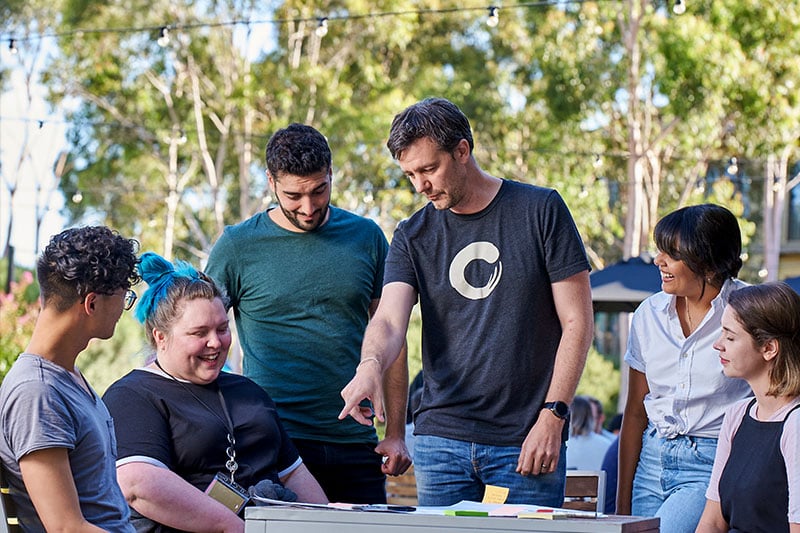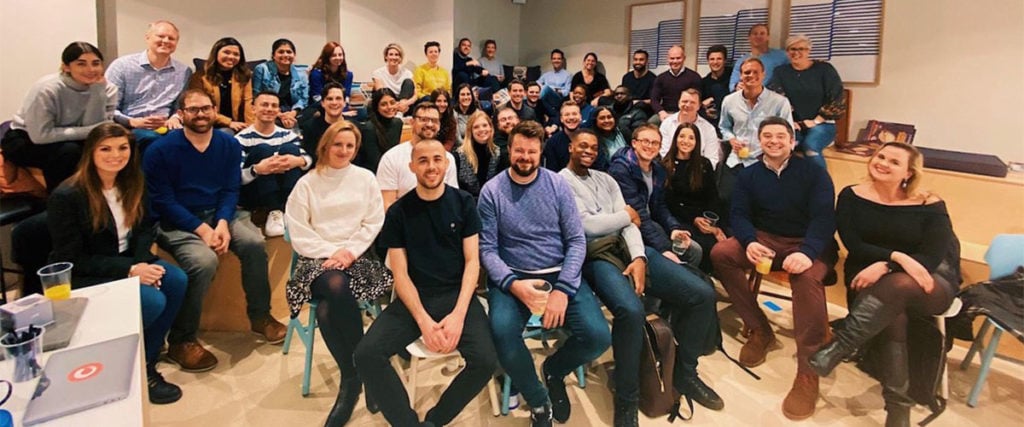Melbourne-based employee analytics platform Culture Amp is using 165 million data points from over 3 million employees to craft a gold standard for culture-focused companies. Katy Stevens, APAC Vice President, shares her insights.
Where do companies like Warby Parker, Airbnb, SoulCycle and McDonald’s turn when they want to invest in employee satisfaction and company culture? They look to Culture Amp an Australian people-orientated analytics platform that encourages leaders to build ‘culture first’ workplaces by harnessing the powerful links between employee engagement, retention and performance. Founded in 2010, the company is a force to be reckoned with, having raised over USD 230 million from leading venture capital funds (including Index Ventures, Sapphire Ventures and most recently, Sequoia Capital China), nudging it definitively into unicorn territory. APAC Vice President and self-proclaimed ‘people geek’ Katy Stevens talks Hive Life through the benefits to be gained by radically rethinking the way you communicate with, listen to and engage with your workforce. “For years, finance and marketing have had access to this kind of data. HR missed out on these tools for a long time, so just the fact that this space exists now is really, really exciting.”

Formerly a lecturer in film studies, Katy began her digital career at the social networking site Yammer. “I got my first taste of a fast-growth B2B company and it really answered my need to be in an action-focused environment,” she recalls. When it was acquired by Microsoft in 2012, however, she also got her first taste of what it feels like when company communication goes south. “Email was the source of everybody’s productivity and well-being. I really felt that organisational communication was broken and that creating something like an enterprise social network would untangle some of the hierarchies that would give people a voice and improve people’s sense of belonging to their organisations.” It was then that she met Culture Amp’s CEO Didier Elzinger and co-founder Rod Hamilton and was immediately captivated by their vision of “not just being a company that helps other organisations put people and feedback at the heart of what they do, but to also practice what they preached.”
You might also like This Silicon Valley Startup is Taking LinkedIn to the next level. Here’s how.

Katy started at Culture Amp in 2015 on the customer success team, leading strategic initiatives to win and retain customers globally. “When I joined, we were very much a tool for allowing HR leaders to survey their employees around a number of psychology-backed principles like engagement, effectiveness and how motivated and connected people feel”. Since then, they’ve gone beyond basic data collection, investing heavily into developing an arsenal of organisational feedback tools that enable tangible action and accountability. “We’re trying to drag the industry into thinking not just about data analysis, but also focusing on the actions you can take to actually move the needle and asking, ‘How can we drive behavioural change and the business outcomes that come as a result of that?’”
One such tool is their engagement survey: a customisable template of 57 questions designed to assess a spectrum of factors driving employee engagement, such as Teamwork & Ownership, Learning & Development, Social Responsibility and Feedback & Recognition. “We make it really easy for leaders to know, ‘This is the thing my team cares most about, how motivated they’re feeling, how likely they are to stay in the company,” says Katy. Findings are then displayed in a personalised dashboard with 1-2 focus areas for creating noticeable change across different teams and demographics. As of Culture Amp’s 2018 data, the top three factors for retaining employees across industries are learning and development opportunities, leadership, and service and quality focus. This is hardly surprising given that 71% of millennials who are most likely to leave their organisations are dissatisfied with how their leadership skills are being developed. They’re also being constantly called into action to face off employee anxieties surrounding the rise of AI and the future of work. To combat these, Katy advises companies to nurture their workforce along lines such as, “How do we invest in the development of individuals to adapt the skills they came out of college with into things a computer can’t copy? It’s the interpersonal stuff, the adaptive thinking, and the mindset that ‘failure’ is merely a springboard to success.”

The survey results also come with inbuilt benchmarks – what Katy calls “collective intelligence” – and bite-sized recommendations based on algorithms trained on insights from over 2300 companies, 3 million employees and 165 million data points. This provides leaders with community-derived and real-world-tested ideas for becoming a truly ‘culture-first’ company, such as more all-hands retrospectives and transparency around employee expectations, workshops, and better diversity and inclusion initiatives. Reflecting on Culture Amp’s acquisition of Zugata in 2019, Katy says that their biggest challenge as industry leaders was “practising what we preached and taking the pulse of how everybody was feeling about the way things were progressing. And our work in diversity, equity and inclusion formed a big part of that.”
Another area Culture Amp weighs in on is with not approaching employee engagement as lip service or a one-time project, but rather as a proactive and ongoing process. “Most performance products are focused purely on rating someone, and then deciding whether they get a raise or not,” says Katy. “We’re using organisational psychology as well as ideas around growth mindset so that you’re entering a process that’s not just about looking back, but also looking forward. There’s a real opportunity to change the perception of that performance process to help individuals feel a sense of ownership over where they can grow in a career.” This is vital, especially during periods of upheaval – be they organisational (such as an acquisition or change of leadership) or global, like today’s coronavirus crisis. In the midst of this, Katy urges companies to “not fear feedback from your people but to invite it, because ignoring it will not stop people from feeling that way.” Having done so, however, employees must be able to visualise change. “There’s nothing worse than asking for people’s feedback and then having them feel like it just goes into a hole somewhere, and they never see you taking action around it. They never see you taking it seriously.”

As Culture Amp sees it, good culture is as much a communications strategy as it is an HR strategy – and one that directly affects companies’ bottom lines, as revealed in a 2017 roundup report. Among the 70+ publicly listed companies surveyed, Culture Amp found that ‘Higher Engagement’ and ‘Higher Product Belief’ among employees were associated with 16.5% and 21.7% higher share price growth in 2018 (YTD) respectively. More remarkable still was that the combined effect of engagement and product belief was associated with 51% higher share growth, showing that engaged employees almost act as diviners of important future outcomes. “Employee sentiment being a lead indicator in future business success is something that really cuts through with people who are sceptical, who think it’s ‘soft’ to put people first.” And, looking forward, Culture Amp is focused on helping their clients get to just that sort of success. “We want to show the world that putting people first is actually a means of business success and not an alternative to it; that you can pursue aggressive growth and still create a workforce that people could feel was the best work experience they’ve had in their life.”
Related Articles
This Australian CEO is Using Data to End the Global Gender Violence Crisis
AI-Driven Social Data Is Helping Us Build Better Neighbourhoods
7 Things Your Startup Should Know About Cyber Security in 2020





